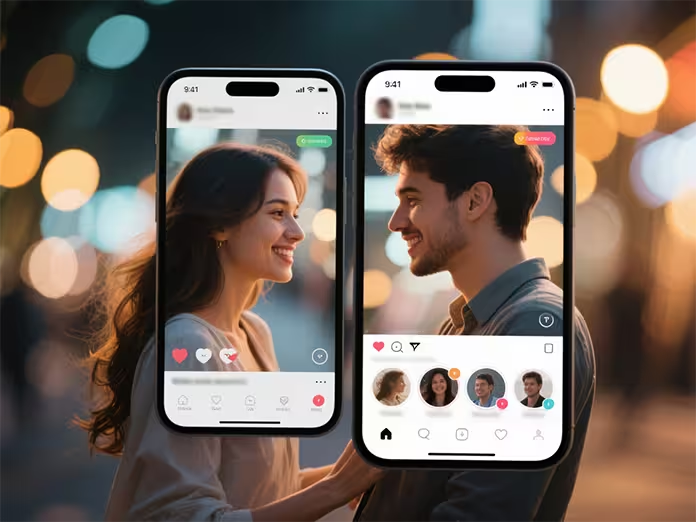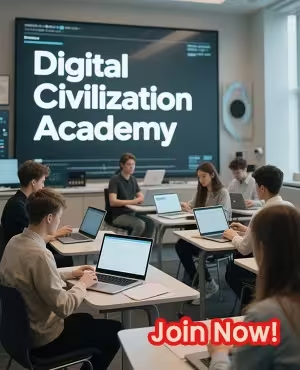
The landscape of love has undergone a digital revolution that would have been unimaginable just decades ago. Online dating and digital relationships have transformed from a niche curiosity into the dominant force shaping modern romance, fundamentally altering how millions of people meet, connect, and fall in love.
The Humble Beginnings: When Love Went Digital
The story of online dating and digital relationships begins in the 1990s, when the internet was still finding its feet. Match.com, launched in 1995, pioneered the concept of digital matchmaking with simple profiles and basic search functions. Users would craft lengthy descriptions of themselves, upload pixelated photos, and wait days for responses via email. The process was slow, deliberate, and carried a significant social stigma.
Back then, admitting you met someone online was often met with raised eyebrows and whispered concerns about “internet weirdos.” The narrative has completely flipped in today’s digital age, where meeting through apps is not just accepted but expected.
The Tinder Revolution: Swiping Into the Future
The introduction of Tinder in 2012 marked a seismic shift in online dating and digital relationships. The app’s genius lay in its simplicity: swipe right for yes, left for no. This gamification of dating made the process addictive, accessible, and lightning-fast. Suddenly, users could browse hundreds of potential matches during a coffee break.
Tinder’s location-based matching and mobile-first approach sparked an entire ecosystem of specialized dating apps. Bumble empowered women to make the first move, Hinge focused on meaningful connections through detailed profiles, and niche platforms emerged for specific communities and interests.
The Psychology Behind Digital Attraction
Online dating and digital relationships operate on fundamentally different psychological principles than traditional courtship. The “choice overload paradox” means users often become paralyzed by endless options, leading to a phenomenon known as “dating app fatigue.” Research shows that having too many choices can actually decrease satisfaction with final decisions.
The digital environment also enables what psychologists call “strategic self-presentation.” Users can carefully curate their online personas, selecting the most flattering photos and crafting witty bios that may not reflect their authentic selves. This creates a fascinating tension between genuine connection and performed identity.
Algorithmic Cupid: How AI Shapes Modern Love
Today’s online dating and digital relationships are increasingly driven by sophisticated algorithms that claim to understand compatibility better than users themselves. These systems analyze everything from messaging patterns and response times to photo preferences and geographical behavior.
Apps like eHarmony use extensive personality assessments to predict compatibility, while others employ machine learning to identify patterns in successful matches. Some platforms even analyze facial features and vocal patterns to suggest potential partners, raising intriguing questions about whether love can truly be reduced to data points.
The COVID-19 Catalyst: Love in Lockdown
The pandemic accelerated the adoption of online dating and digital relationships in unprecedented ways. With physical meetings restricted, virtual dating became the norm rather than the exception. Video calls replaced coffee dates, and couples fell in love through screens before ever meeting in person.
This period saw explosive growth in dating app usage, with some platforms reporting increases of over 30% in daily messages. The forced digital intimacy challenged traditional relationship timelines and created new forms of emotional connection that persisted even as restrictions lifted.
Dark Side of Digital Romance: Challenges and Pitfalls
Despite their popularity, online dating and digital relationships face significant challenges. “Ghosting” – suddenly ceasing all communication without explanation – has become commonplace, leaving emotional wounds and undermining trust in digital connections.
Catfishing, where individuals create false identities to deceive others, remains a persistent problem despite improved verification systems. The ease of creating multiple profiles or misrepresenting oneself online continues to plague users seeking genuine connections.
The gamification elements that make apps addictive can also be destructive. Some users report feeling like they’re shopping for humans, treating potential partners as disposable commodities rather than complex individuals worthy of respect and consideration.
Generational Divide: How Different Ages Navigate Digital Love
Online dating and digital relationships affect different generations in distinct ways. Gen Z users, raised on social media, navigate dating apps with native fluency but may struggle with face-to-face interaction. They’re comfortable with multiple simultaneous conversations and view online dating as natural as breathing.
Millennials pioneered the swipe culture but increasingly seek meaningful connections as they age. Many are turning to apps that emphasize compatibility and long-term relationships over casual encounters.
Older generations entering the online dating scene often face a steep learning curve but bring different expectations and communication styles that can be refreshing in the fast-paced digital environment.
The Future of Digital Romance: What’s Next?
The evolution of and online dating digital relationships shows no signs of slowing. Virtual and augmented reality technologies promise even more immersive ways to connect, potentially allowing couples to share virtual experiences before meeting physically.
AI assistants may soon help users craft better messages or identify red flags in potential matches. Biometric data could provide new insights into compatibility, measuring everything from heart rate during conversations to pheromone compatibility through advanced sensors.
Blockchain technology might address trust issues by creating verified, tamper-proof profiles, while advanced matching algorithms continue to refine the art of digital matchmaking.
Redefining Relationships for the Digital Age
Online dating and digital relationships have fundamentally altered our understanding of love, commitment, and human connection. While technology has made it easier to meet potential partners, it has also complicated the path to genuine intimacy.
The key to successful digital relationships lies in maintaining authenticity while embracing the opportunities technology provides. As these platforms continue to evolve, they’ll undoubtedly shape not just how we meet, but how we love, commit, and build lasting connections in an increasingly digital world.
The revolution is far from over, and the next chapter of online dating and digital relationships promises to be even more fascinating than the last.


































